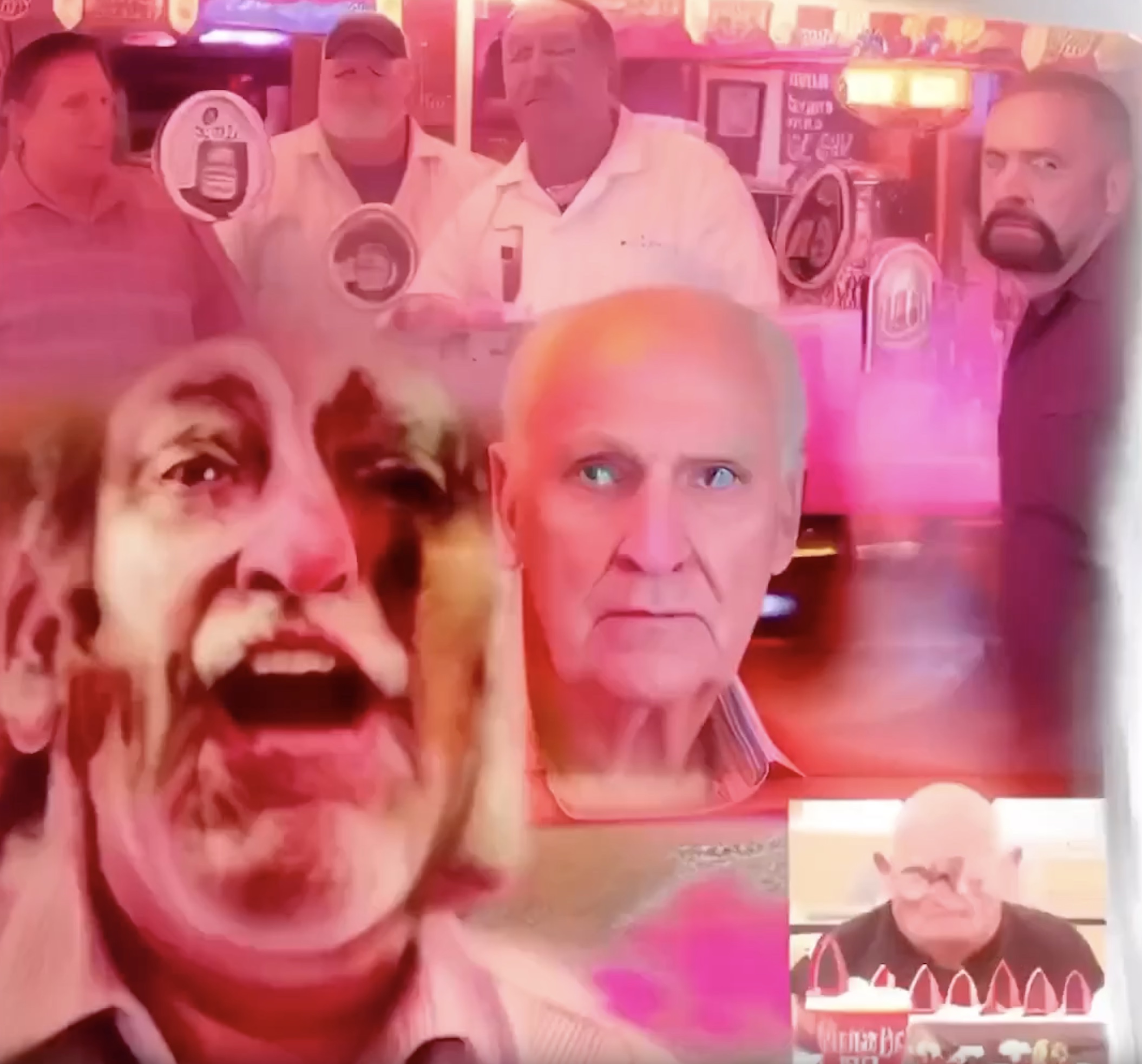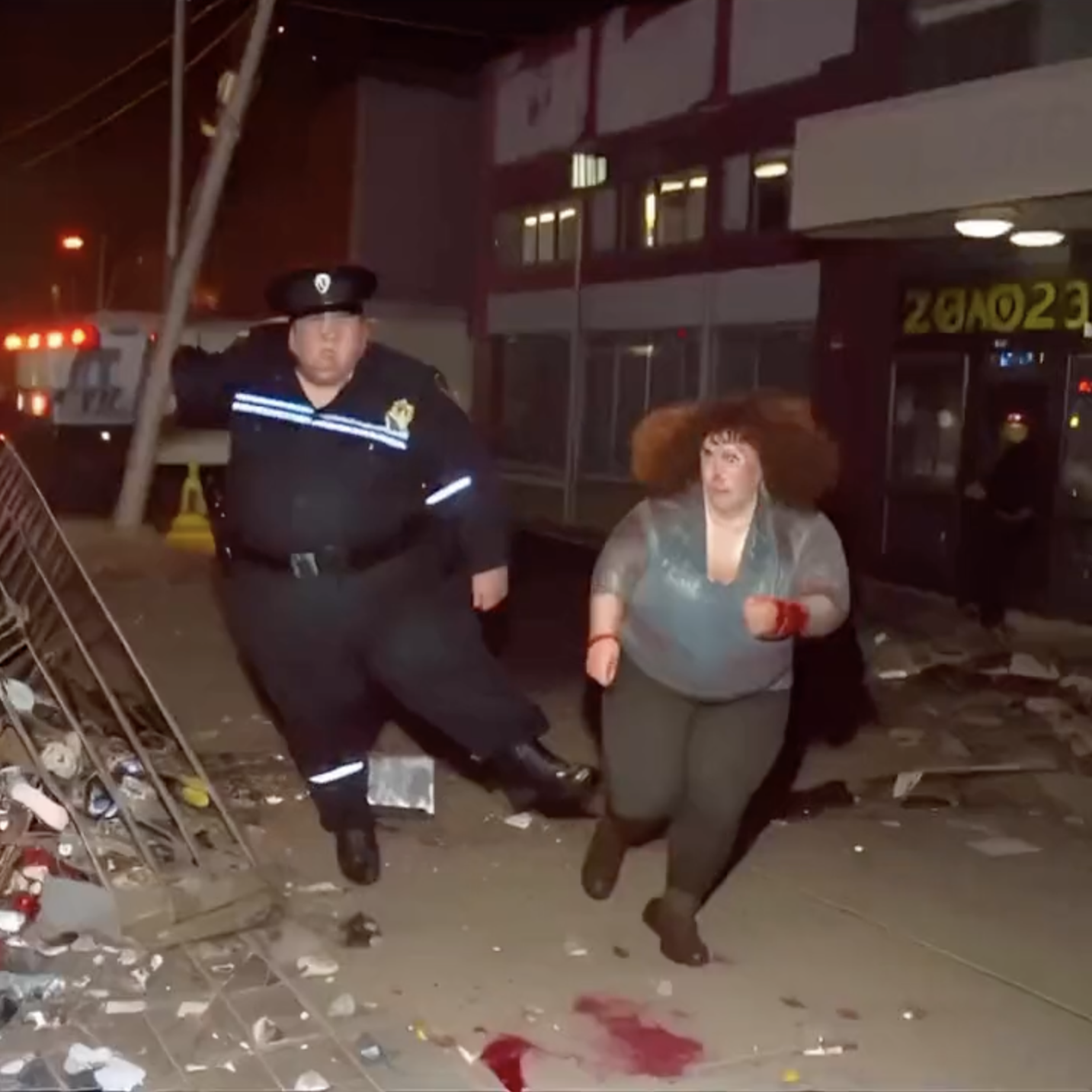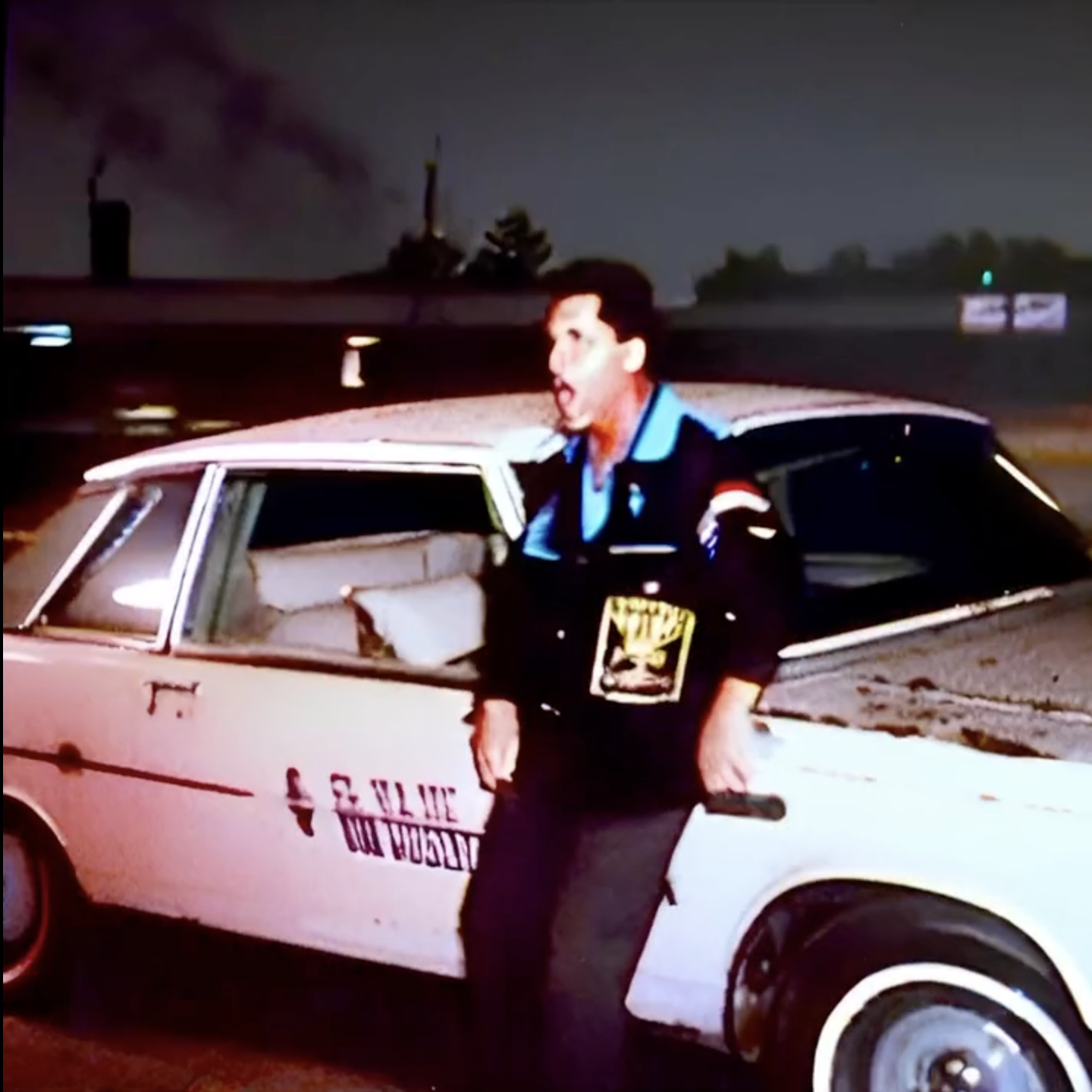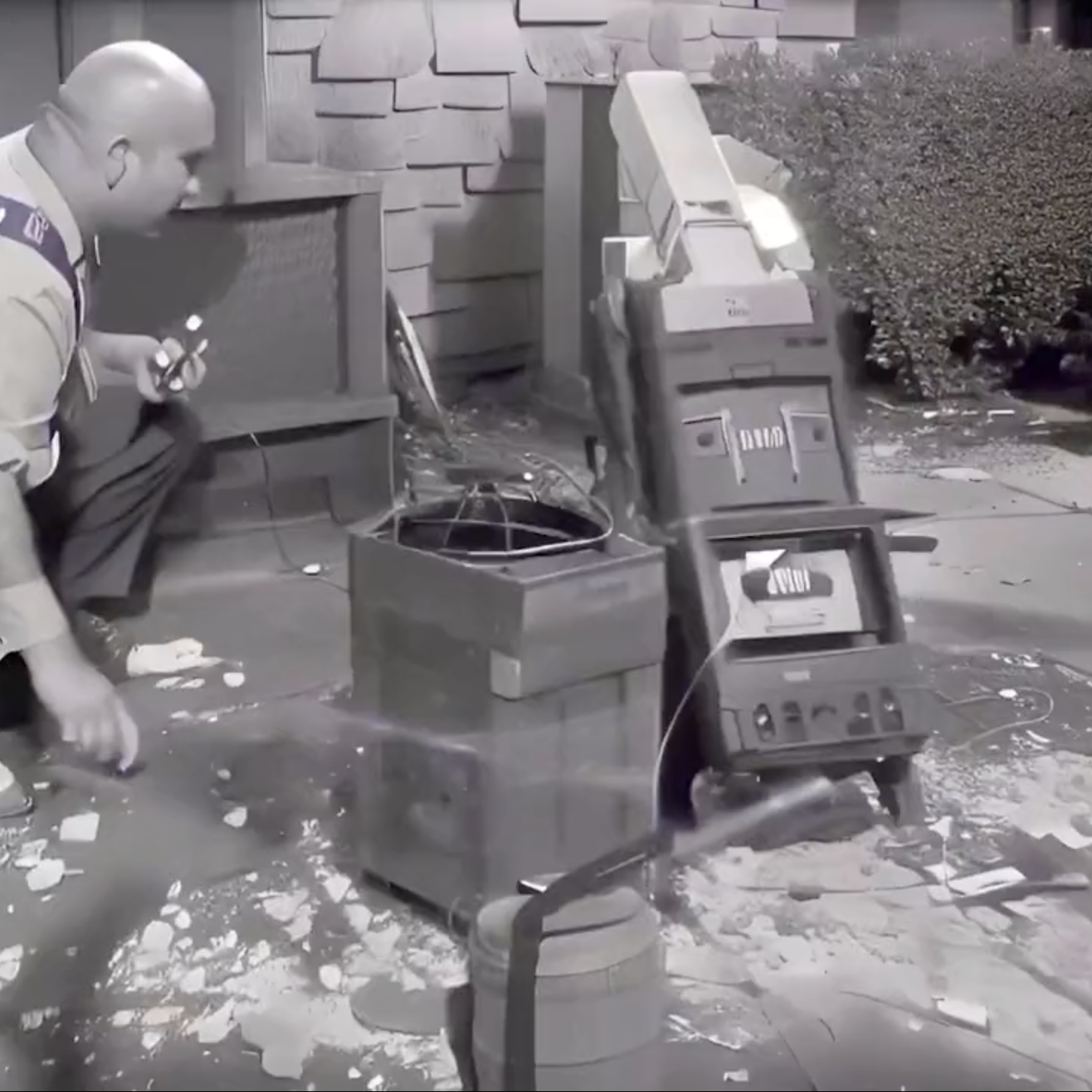In Conversations

From a young age, I was acutely aware of the significance of capturing mundane, ordinary, and seemingly unremarkable moments through the lens, often contemplating their absence in popular culture.
Frank Manzano
Plutonium F. speaks to Frank Manzano
Plutonium Fitzgerald: Can you tell us about your background and how you got started in creating art?
Frank Manzano: I have been engaged in artistic endeavors for as long as I can recall. Drawing consumed much of my childhood, particularly after receiving a set of pastels and watercolors from my aunt when I was seven years old. Alongside these materials, she gave me a series of books chronicling the painters of the Renaissance and beyond. It was the allure of pastels that captivated me, resulting in countless sketchbooks filled to the brim and my bedroom overflowing with construction paper.
During my high school years, I discovered the mesmerizing world of oil paints and began taking drawing more seriously. Additionally, I embarked upon my inaugural photography class, which kindled my long-standing affinity for the medium. From a young age, I was acutely aware of the significance of capturing mundane, ordinary, and seemingly unremarkable moments through the lens, often contemplating their absence in popular culture. In fact, stumbling upon a discarded Polaroid camera tucked away in a closet, complete with a few remaining film packs, inspired me to document the banal elements of my surroundings. Despite swiftly exhausting the film supply, this experience planted the seed of my interest in photography.
Upon reaching high school, my fascination with photography was reignited, culminating in the school providing each student in the class with a Canon AE-1 camera. Immersed in the art of snapping photographs, my thoughts inevitably turned to the world of film. Fast forward to 1999 when I enrolled at Columbia College Chicago to further my studies in Photography and Film. This era witnessed the emergence of digital video cameras capable of delivering high-quality imagery, captivating me with their potential. Subsequently, I stumbled upon the realm of handheld digital cameras, which advocated for a rule-bound approach, eschewing post-production techniques. This philosophy resonated deeply with my sensibilities, as I have always gravitated towards experimental, avant-garde, and cinema vérité styles. Considering cost considerations, I was done with film and delved into the realm of cheap digital cameras.
Shortly thereafter, the advent of flip phones with built-in cameras, along with the emergence of Google Images, further fueled my fascination. I became enthralled by the pixelated quality they produced, incessantly collecting images and engaging in collaging activities. The release of the first iPhone only heightened my obsession with image collection. In parallel, I reignited my passion for painting and drawing on a smaller scale. As life progressed, I found myself entering the workforce, albeit not in a creative field. A brief stint in the restaurant business followed before transitioning to the world of technology. Art remained an integral part of my life, serving as a counterbalance, but never something I could envision sustaining a livelihood from.
Fast forward approximately four years ago, when I stumbled upon Procreate and Blender, with Procreate particularly resonating with me due to its tactile nature, aided by the idea of drawing with an antenna (Apple Pencil). I invested considerable time in photobashing and creating digital paintings, while my analog pursuits diminished gradually.
My longstanding interest in neural networks and AI reached a turning point around a year ago when readily available tools ignited a Eureka moment within me. I vividly remember spending thirteen hours generating AI images on Wombo Dream. Concurrently, I delved into animating within Procreate, showcasing the results on Instagram, where they were warmly received. It felt only natural to incorporate AI-generated images into these animations, culminating in the evolution of my work over the past year.
PLUTONIUM F.: What got you interested in creating art with AI tools? How has AI evolved your artistic process?
MANZANO: The novelty of AI tools and their implications for the future of civilization are a source of great fascination for me. We are standing on the precipice of a transformative era, one that holds unimaginable possibilities. AI's ability to consume vast amounts of data is particularly striking. It now has access to the entirety of human history and culture, making it a collaborator of unparalleled knowledge and sophistication. Rather than viewing AI as a mere tool, I perceive it as an advanced collaborator, capable of engaging in profound conversations.
These collaborations transcend the boundaries of imagination as we share images, ideas, and memories with AI. The results often astonish and occasionally unsettle us. For me, the creative process and art itself have always been a personal dialogue, an internal conversation. However, this dialogue has now expanded into a collective medium. Social media, especially platforms like Instagram, has proven to be an ideal outlet for engaging with the rapid pace of this technology and sharing these ongoing dialogues.
The interplay between AI and art has opened new avenues for exploration and expression, propelling us into uncharted territories. It simultaneously challenges and excites, inviting us to ponder the implications for our society and the nature of our creative impulses and problem-solving abilities. As we navigate this evolution, the possibilities for artistic collaboration and the dissemination of these dialogues continue to expand.

This amalgamation of human and artificial intelligence creates a unique artistic perspective, challenging the notion of what is deemed acceptable or "real" in our rapidly changing world.
Frank Manzano
PLUTONIUM F.: What inspires you as an artist?
MANZANO: What inspires me as an artist is the profound interconnectedness of symbolic dots. It fascinates me how our individual experiences shape our internal landscapes and manifest themselves within the broader cultural tapestry. Despite our technological advancements, fundamental questions about our existence and origins remain enigmatic. With the finite nature of time, I firmly believe that every individual has a legitimate opportunity to contribute to unraveling these mysteries.
As an artist, I don't consider myself possessing a specific skill set, but rather an ability to pause and perceive patterns in a unique manner. It’s through this capacity that I strive to capture and convey a deeper understanding of the world, reflecting the intricacies and complexities that lie beneath the surface.
PLUTONIUM F.: You are a part of a group show titled "Post Photographic Perspectives II — Acceptable Realities." Can you discuss how your work fits into this collection?
MANZANO: I believe that in the evolution of art, the advent of the camera significantly altered the trajectory of painting. Early artists sought to recreate the external world, but the camera's emergence prompted a shift in painting towards presenting internal worlds while attempting to mirror external realities. The 20th century introduced the concept of abstraction, questioning the nature of artistic expression and exploring various modes of communication.
I firmly believe that all artistic mediums are destined to intersect and intertwine. Therefore, the idea of "Post-Photography" resonates with me as it represents an important juncture in artistic evolution. It signifies a pivotal moment where various mediums converge, and it is within this space that I feel my work belongs. For the first time, I am not merely a spectator or consumer of content but an active contributor to this evolving visual language.
Regarding the theme of "Acceptable Realities," my collaboration with AI feels both deeply personal and detached from me. It represents a new reality where the rules are vague and ambiguous, and transcend conventional boundaries. This amalgamation of human and artificial intelligence creates a unique artistic perspective, challenging the notion of what is deemed acceptable or "real" in our rapidly changing world.

PLUTONIUM F.: Tell us more about the project. How did you come up with the name and your creative process for this project?
MANZANO: My creative process is rooted in simplicity. Throughout the day, I constantly capture photographs and screenshots using my phone. These images serve as templates. Importing them into Procreate, I begin manipulating them, experimenting with compositions, textures, colors, and angles. I incorporate various prompts, often extending from previous ones, as well as snippets of memories, shopping lists, and notes scribbled throughout the day. This amalgamation of reference images and prompts initiates a dialogue from which a narrative starts to emerge, even if its meaning isn't immediately apparent.
If the results resonate with my sensibilities, they hold significance. Perfection is not my goal, and I embrace the process of morphing and blending images. I set a rule for myself regarding the number of images I would generate for each idea, ensuring a focused approach. Once the session is complete, I export the images into Procreate as they are. During the review phase, I examine them at a rate of 2 frames per second, maintaining the original order with few exceptions. This process helps me determine the tempo of the piece, which can range from 5 frames per second to 60. By refraining from editing or reordering, I aimed to present a continuous stream of consciousness where images seamlessly morph and unite, resembling a dream-like state or rumbling of ideas and images.
PLUTONIUM F.: What are your thoughts on the intersection of photography and AI technology?
MANZANO: Photography has traditionally been viewed as a means of capturing moments or images from the "real" world. However, as photography technology and aesthetics have advanced, our perception of reality has also evolved. The emergence of AI-generated images challenges the notion of what is considered "real" based on traditional understanding. These AI-generated images may not fit within the traditional parameters of reality, yet they are undeniably real images originating from a new source.
In my creative process, the seamless integration of photography and AI is evident, because the same creative muscle I exercise when capturing photographs is engaged when generating images with AI. I believe in this symbiotic relationship because it allows for new perspectives and creative possibilities to emerge.

PLUTONIUM F.: Anything you would like to share with people skeptical about AI tools for creativity?
MANZANO: To those who may harbor fear or skepticism about this intersection or AI in general, I encourage an open-minded approach. Embrace your current understanding and attitudes, "come as you are," and engage in a dialogue with the creative prompts. Explore where it leads you and allow it to reveal new insights and perspectives that may challenge your preconceived notions.
PLUTONIUM F.: Thank you so much for taking the time to speak with us. What is the best way for people to follow you and learn more about you and your work?
MANZANO: A good place to find my work is on Instagram. There you will find my daily dialogues as well as still images and my references from time-to-time. Anyone is free to DM me; I’m always interested in discussing ideas.